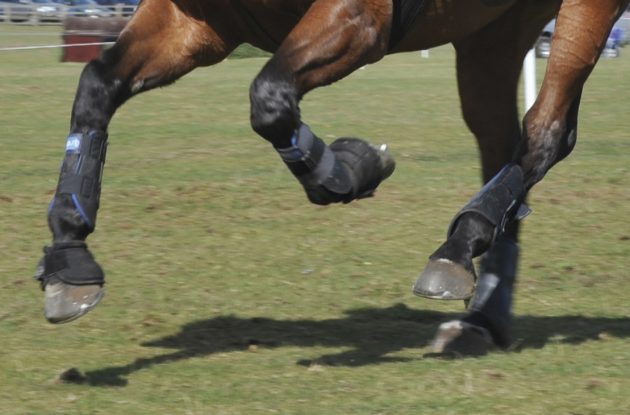We have a couple of horses in for the rehabilitation of leg injuries at the moment. Often these cases will stay with us for a number of months and we most commonly get them straight from a period of box rest. I have to admit we tend to get rather attached to them when they come in for a long time — they’re like part of the family by the time they leave us.

Most tendon injuries referred to us for rehabilitation will have been treated with stem cell therapy
Both of our current stem cell horses have been treated for superficial digital flexor tendon (SDFT) injuries, but are at different stages in the recovery process. Often the vets will recommend a period of paddock rest in the middle of the horse’s programme, and one of the upshots of ‘phase one’ is to help to in the preparation for this turnout stage.
It sounds crazy to say that you need to prepare a horse for going out in the field, but post-injury you have to be sure that you’ve exposed the leg to enough controlled exercise and allow the healing process to take hold, prior to turning them out.
We seem to get more rehab cases that have been treated with stem cell than cases that have just been rested or treated by other methods. I think there are various reasons for this, but predominantly it seems to be racehorses and either proven competition horses, or those deemed to have a bright future ahead of them, that come to us to begin their return to work.
In our experience, one of the benefits of stem cell therapy is that it cuts down the amount of complete box rest required, with the horses able to start some form of exercise much earlier, albeit in a very controlled environment. Although you’re still pretty much talking about a year away from competition or racing in terms of recovery, evidence and opinion suggest that the chance of re-injury is less than by rest alone, or other traditional methods.
We use the treadmill for rehab cases during their walk and trot work as it allows us to exercise the horse in a very safe and measured way; the surface is wholly consistent, the duration can be dictated to the second, and the speed set to work the horse optimally.

As a result we can just get on with their work, without worrying about them being fresh or jumping around. This in itself is another reason horses are referred to us: the once beautifully-behaved animal can become a fire-breathing dragon, ready to pounce on its owner at the first available opportunity during in hand walking. And who could blame it?
Athletic horses are used to working hard, going out in the field, going off training and travelling to competitions. The treadmill offers a great option for these cases, who benefit from the routine and the need to concentrate on where their feet are landing! Fingers crossed that our current 2 continue to make a full recovery.
All the fun of the fair
I wrote in my last blog that we were preparing for Hartpury’s Summer Fair earlier this month; well, what a great day. We had people from all walks of life through our doors and every one of them was happy for us to show them what we do here.
My boss’ son Max came along to help us with the final preparations for the day, which added an extra level of amusement to proceedings. I was doing the final bit of horse-polishing ready for our last tour at 2.30pm, when he came storming through the treadmill room pointing at his watch. “Fizz, its 2.26! We need you now!” he said. Well, that was me put firmly in my place by an 8-year-old! That boy will go far.
Fizz





